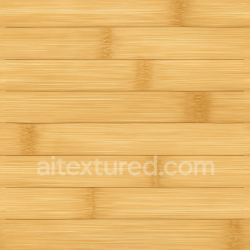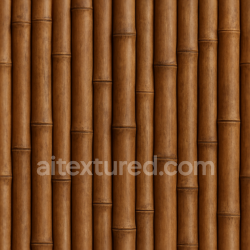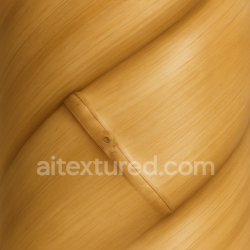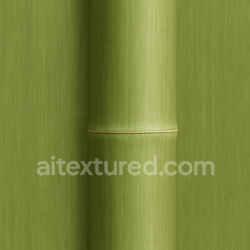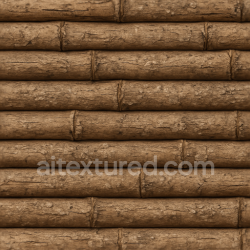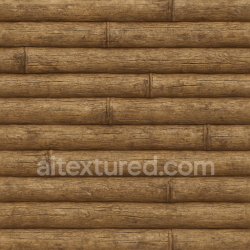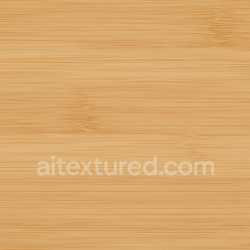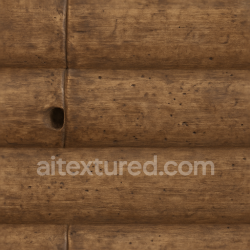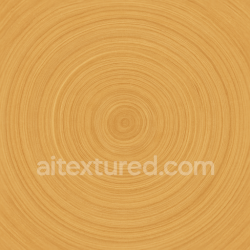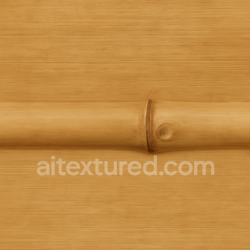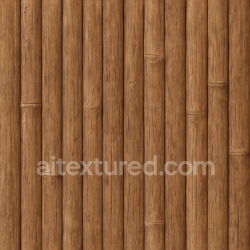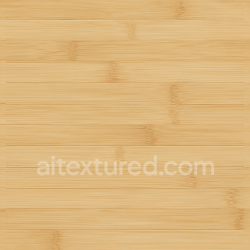Mastering Tactile PBR Textures for Realistic Surface Detailing
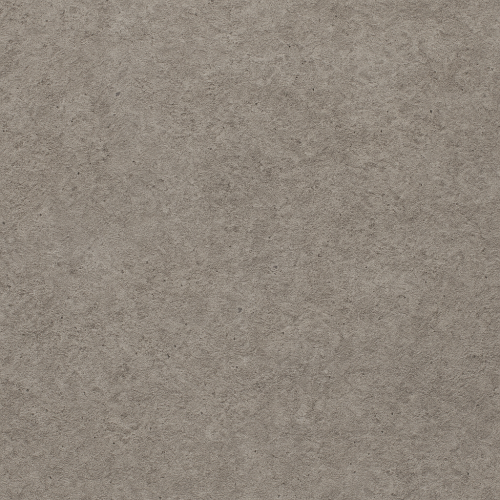
Capturing tactile PBR textures with sufficient fidelity and resolution requires a disciplined approach to acquisition methods, balancing technical constraints with practical workflow considerations. The goal is to produce physically accurate, high-resolution surface data that can be seamlessly integrated into PBR pipelines, preserving micro-variations and subtle surface details essential for believable material rendering. Among the most effective techniques for this purpose are photogrammetry and structured light or laser scanning, each providing distinct advantages and challenges in the context of acquiring comprehensive texture sets such as albedo, roughness, normal, ambient occlusion (AO), height, and metallic maps.
Photogrammetry remains a widely adopted method due to its accessibility and ability to capture both color and geometry simultaneously. It involves photographing a real-world surface from multiple angles under controlled lighting conditions to reconstruct a dense 3D mesh and high-fidelity texture maps. Achieving tactile detail through photogrammetry hinges on the quality and resolution of the input images. High-resolution cameras paired with macro or close-up lenses are essential for capturing fine surface variations, especially for micro-roughness and subtle height differentials that influence normal and height maps. Lighting must be diffuse and even to avoid harsh shadows or specular highlights that could corrupt the albedo and roughness data. Employing polarizing filters and cross-polarization techniques can further reduce unwanted reflections, allowing more accurate separation of diffuse albedo from specular components.
Once images are captured, dense reconstruction algorithms generate a mesh that often requires retopology and optimization to remove noise and artifacts without sacrificing micro-details. The reconstructed mesh then serves as the basis for baking normal, AO, and height maps. High-precision baking is critical; any deviation in mesh detail or UV layout distortions can introduce seams and artifacts that undermine the tactile quality of the texture. To address this, it is advisable to generate multiple UV sets, reserving one for baking and another optimized for tiling and engine usage, such as in Unreal Engine or Blender. Proper UV unwrapping that minimizes distortion and maximizes texel density ensures that micro-variations are preserved across the texture space, avoiding blurring or stretching of surface details.
Structured light and laser scanning technologies offer an alternative approach to capturing tactile details by directly measuring the surface geometry with high precision. These scanners project known patterns or beams onto the surface and calculate depth information based on distortions or time-of-flight measurements. The resultant point clouds or meshes capture minute surface undulations with sub-millimeter accuracy, making them ideal for acquiring height and normal data for tactile PBR textures. However, these methods typically lack color information, necessitating a separate capture pass for albedo and roughness maps using calibrated cameras under controlled lighting. Merging geometry data from scanning with high-quality photographic textures demands careful calibration and alignment to ensure spatial coherence, often involving photogrammetric markers or reference points for accurate registration.
One common challenge in both photogrammetry and scanning is the acquisition of seamless, tileable textures suitable for game engines or real-time rendering environments. Surfaces in the real world rarely present themselves as perfect tiles, and raw captures often contain edges or discontinuities that disrupt seamless repetition. To overcome this, captured textures must be processed in authoring tools such as Substance Designer or Blender, where edge blending, offset wrapping, and procedural noise overlays can mask seams and introduce natural micro-variations. Maintaining the tactile fidelity while performing these adjustments requires a non-destructive workflow, often involving multi-layered texture stacks and careful use of height map blending to preserve surface relief continuity.
Calibration plays a pivotal role in ensuring the consistency and accuracy of tactile PBR textures. Color calibration targets and grey cards should be included in image captures to correct white balance and exposure, which directly affect albedo accuracy. For roughness and metallic maps, which influence light reflection and energy conservation, calibration involves cross-referencing captured data with measured reference materials or spectrophotometric data to ensure physically plausible parameter ranges. When using scanning devices, geometric calibration ensures scale accuracy and corrects for lens distortion or scanner drift, which can otherwise introduce errors in normal and height maps, leading to shading artifacts in the final render.
Optimization is a necessary step to balance tactile fidelity with performance constraints, especially for real-time engines like Unreal Engine. High-resolution captures often yield extremely large texture maps, which must be downsampled or tiled intelligently to fit within memory budgets without losing critical surface detail. Techniques such as mipmap generation, channel packing (e.g., combining roughness, metallic, and AO into a single texture), and normal map compression are standard practice. However, care must be taken to preserve the subtle gradients and high-frequency details that define tactile sensation. In Blender’s shader editor or Unreal’s material graph, procedural detail can be added or enhanced through overlays of noise or curvature maps derived from baked geometry, complementing the baked tactile data with engine-side variations that react dynamically to lighting and camera angle.
Finally, practical acquisition workflows often integrate iterative testing within the target engine environment. Importing captured textures into Unreal Engine or Blender allows immediate visual verification under physically based lighting conditions, revealing imperfections, tiling artifacts, or calibration mismatches that may not be apparent in authoring tools. Using engine-specific shader setups that leverage the full PBR workflow, including subsurface scattering or anisotropic reflections where applicable, ensures that tactile textures perform as intended, both visually and computationally. This iterative feedback loop informs further capture sessions or refinements in texture processing, leading to a robust tactile material ready for deployment in production environments.
In conclusion, acquiring tactile PBR textures is a complex process that demands high-resolution data capture, precise calibration, seamless tiling solutions, and careful optimization. Photogrammetry and scanning technologies complement each other by providing combined color and geometry data necessary to reproduce realistic surface detail across all relevant PBR channels. When executed with technical rigor and integrated tightly into PBR authoring and rendering pipelines, these acquisition techniques enable the creation of tactile materials that faithfully replicate the nuanced interplay between light and surface texture critical for physically based rendering.
Creating tactile PBR textures that convincingly convey surface detail and subtle material variations demands a careful balance between procedural generation and photographic editing techniques. Both approaches offer unique advantages and challenges when it comes to authoring textures that deliver micro-variation, seamless tiling, and physical accuracy across the full suite of PBR maps—albedo (or base color), roughness, normal, ambient occlusion (AO), height, and metallic (when applicable). Understanding the workflows for each method, along with their integration into real-time engines like Unreal Engine or offline renderers within Blender, is crucial for achieving tactile fidelity without compromising performance or artistic control.
Procedural texture authoring leverages mathematical algorithms and noise functions to generate surface detail dynamically, which can be particularly effective for patterns that require infinite tiling or high-frequency micro-variation. When building procedural tactile textures, the primary advantage lies in the ability to create perfectly seamless maps without visible repetition artifacts. For instance, generating roughness and normal maps through layered noise and fractal functions allows for nuanced surface irregularities that respond naturally to lighting, enhancing the perceived tactility of materials such as worn metals, rough stone, or brushed fabrics. Tools like Substance Designer or Blender’s procedural nodes enable artists to compose complex graph-based workflows where parameters can be adjusted in real-time to fine-tune the intensity and scale of micro-variations.
In procedural workflows, the albedo map often starts from base colors modified by procedural noise or cellular patterns that simulate dirt, stains, or wear. Since albedo controls the diffuse reflectance and color fidelity, it is important to ensure that any procedural variation respects the material’s inherent color properties and avoids introducing artificial saturation or hue shifts that break physical plausibility. Procedurally generated AO maps can be derived by simulating ambient occlusion effects within the graph using curvature or cavity extraction nodes, which help accentuate fine surface details by darkening crevices and recesses. Height maps can be generated from noise layers with fractal Brownian motion to add subtle relief for parallax or tessellation effects in the engine, enhancing the tactile sensation when viewed up close.
Normal maps in procedural texturing benefit from combining multiple noise layers at different frequencies and amplitudes. This multi-scale approach imitates the complex micro-geometry found in natural materials and mechanical surfaces alike. Since normal maps encode directional information critical to accurate light reflection, careful calibration is necessary to avoid exaggerated or flattened normals that disrupt shading. Artists typically use normal map combining nodes to blend detail normals with a base normal map generated from height data, ensuring that the resulting vector field remains consistent and artifact-free. Because procedural systems inherently produce tileable outputs, they are well-suited for large surfaces such as terrain or architectural elements where repetition would otherwise be problematic.
Photographic texture authoring, on the other hand, starts from high-resolution images captured with calibrated cameras and lighting setups, often using specialized equipment such as macro lenses or photogrammetry rigs to acquire detailed surface data. The challenge here lies in isolating and enhancing tactile information from raw photographs while maintaining seamless tiling and physical correctness across all PBR channels. The albedo map extraction involves carefully removing lighting artifacts, shadows, and specular highlights to yield a clean diffuse color layer that accurately represents the material’s intrinsic color. Advanced image editing techniques, including frequency separation and color grading, help preserve subtle color variations and prevent the texture from appearing flat or overly uniform.
When producing roughness maps from photographic sources, artists often rely on grayscale images that capture the microsurface scattering properties of the material. These can be derived from specular or glossiness photographs using inversion and calibration against measured reference values. It is vital to calibrate roughness levels to correspond with real-world values, as overly smooth or rough surfaces can break the tactile illusion under dynamic lighting conditions. Normal maps are frequently generated using photogrammetry-derived geometry or normal map baking from high-poly scans. However, photographic normal maps sometimes require retouching to remove noise or stitching artifacts, especially around seams or areas with complex geometry. Tools such as xNormal, CrazyBump, or Substance Alchemist facilitate this process by converting height or displacement maps into clean normal maps that preserve fine surface detail.
Ambient occlusion derived from photographs is often baked from 3D models reconstructed from photogrammetry, capturing self-shadowing effects that contribute to tactile perception. This AO map is essential for grounding surface details and enhancing depth cues. Height maps, fundamental for parallax occlusion mapping or displacement, can be generated by extracting grayscale height data from the photographed surface or reconstructed geometry. Maintaining seamless tiling when working with photographic textures is challenging, as real-world surfaces rarely tile perfectly. Techniques such as edge mirroring, frequency domain blending, or manual cloning and healing in image editors like Photoshop or GIMP are necessary to remove visible seams without losing tactile detail.
Combining procedural and photographic methods can yield powerful results, leveraging the authenticity of photos with the infinite variability and seamlessness of procedural noise. For example, an artist may start with a photographic albedo and normal map base, then overlay procedural noise to introduce micro-variation in roughness or height maps, breaking up repetition and increasing tactile complexity. This hybrid approach also facilitates nondestructive workflows, where procedural parameters can be adjusted post hoc without re-photographing or rescanning the material.
In both workflows, calibration is paramount. Artists should employ real-world reference materials and measurement devices such as spectrophotometers or gloss meters to ensure that albedo reflectance and roughness parameters fall within physically plausible ranges. Calibrating textures against known standards prevents common pitfalls like energy loss or gain and ensures consistent appearance across different lighting environments and rendering engines.
Optimization also plays a critical role in tactile PBR texturing. High-frequency micro-variations can be expensive in terms of texture resolution and shader complexity, so artists must strike a balance between detail level and performance. Techniques such as mipmapping-aware detail normal maps, height map compression, and channel packing (e.g., storing AO, roughness, and metallic in a single texture’s RGB channels) help reduce memory footprint without sacrificing tactile quality. In real-time engines like Unreal Engine, authoring workflows should consider engine-specific features such as virtual texturing, tessellation, or runtime material blending to maximize tactile realism while maintaining framerate targets. Blender’s node-based material editor offers extensive procedural capabilities for previewing and baking these texture maps, allowing iterative refinement before exporting to game engines.
Finally, maintaining seamlessness while preserving tactile feel requires meticulous attention to texture coordinate mapping and tiling strategies. UV layouts should minimize stretching and distortion, especially in areas critical for tactile interaction. When possible, utilizing triplanar projection or world-space texturing can alleviate tiling artifacts on complex geometry. Procedural noise layers should be carefully scaled to match the physical scale of the material, ensuring that micro-variation corresponds to expected tactile frequencies rather than appearing artificially large or small.
In summary, the creation of tactile PBR textures demands a synthesis of procedural generation and photographic editing techniques, each addressing different aspects of surface detail and material accuracy. Procedural methods excel at producing seamless, variable micro-geometry and roughness, while photographic sources provide authentic albedo and normal data rich in real-world complexity. Calibration against physical references, optimization for engine constraints, and precise control over tiling and texture mapping are essential to preserve tactile fidelity. Mastery of both workflows empowers artists and technical directors to craft materials that not only look physically accurate but also evoke a convincing sense of touch through their visual detail.
Creating and calibrating PBR maps for tactile textures requires a meticulous approach to capture the nuanced interplay between surface detail and light, ensuring materials respond authentically across varying illumination scenarios. The tactile quality of a surface—its perceived roughness, depth, and subtle variations—hinges on the accurate synthesis and balance of several core texture maps: albedo (or base color), normal, roughness, height, ambient occlusion (AO), and, where applicable, metallic. Each map plays a specific role in defining how light interacts with micro and macro surface features, and the challenge lies in harmonizing these inputs to convey a convincing tactile feel, particularly when textures tile repeatedly or are viewed from multiple angles.
Albedo maps serve as the foundation, representing the diffuse color of the material without any baked-in lighting or shadow information. For tactile materials, it's critical to avoid contaminating the albedo with shadows or highlights, as this can severely impair the flexibility of the shader under dynamic lighting. When authoring albedo textures, whether through high-resolution photography, photogrammetry, or hand painting, one must ensure color fidelity and neutrality regarding light interaction. Subtle color shifts that arise from subsurface scattering or material-specific light absorption should be carefully preserved, but any directional lighting baked into the source imagery should be neutralized through techniques such as color correction, level adjustment, or manual repainting. In practice, physically-based albedo values typically remain within a certain luminance range; extremely dark or overly saturated areas should be avoided unless they represent genuine material properties, as these can distort the energy conservation principles fundamental to PBR workflows.
The normal map is paramount for simulating fine surface irregularities that influence light reflection without modifying the underlying geometry. For tactile surfaces—wood grain, fabric weave, stone pitting—the normal map encodes the microsurface orientation changes that generate subtle shading variations and specular highlights. Normal maps can be derived from high-resolution sculpted geometry or created procedurally using software such as Substance Designer or xNormal. When generating normal maps, attention must be given to the scale and intensity of the bump information; overly aggressive normal strength can cause the surface to appear artificially rough or noisy, while insufficient detail flattens the tactile perception. Calibration involves iterative testing under different lighting conditions and viewing angles within the target engine, such as Unreal Engine or Blender’s Eevee/Cycles, to ensure that the normal map complements the roughness and height data without conflicting visual cues. Additionally, care must be taken to maintain correct tangent space orientation, especially when tiling textures or using mirrored UVs, as normal map artifacts can easily break immersion.
Roughness maps define how microsurface facets scatter light, controlling the sharpness and spread of specular reflections. For tactile materials, roughness encapsulates the inherent surface friction and micro-variations that dictate tactile perception. The challenge in roughness map creation lies in balancing uniformity with micro-variation; perfectly flat roughness values result in plastic or unnatural appearances, while excessive noise can cause distracting specular artifacts. Techniques for generating roughness maps include extracting data from grayscale height or ambient occlusion maps, procedural noise layers, or even painting localized roughness variations by hand. Calibration requires observing the material under a range of simulated lighting angles and intensities to confirm that specular highlights behave consistently with the real-world counterpart. For instance, a tactile leather surface will exhibit localized roughness fluctuations due to wear patterns, pores, and creases, which must be subtly encoded in the roughness map. In Unreal Engine, roughness is often inverted compared to gloss maps used in other pipelines, so verifying correct channel interpretation and linear versus gamma space handling is essential. Additionally, roughness maps should be optimized for compression artifacts, as blocky noise can translate into unnatural highlight patterns.
Height maps add an extra dimension of tactile realism by encoding surface displacement or parallax information, enabling shaders to simulate depth and occlusion beyond normal perturbations. Height data is particularly effective for materials where macro-relief details define the tactile experience—such as embossed leather, engraved metal, or rough stone surfaces. Height maps can be sourced from high-poly sculpts or generated from grayscale texture channels emphasizing the relative depth of surface features. In practice, height maps require careful calibration to avoid excessive displacement that breaks silhouette integrity or causes self-shadowing artifacts, especially in real-time engines with limited tessellation or parallax occlusion capabilities. Calibration is iterative; one must balance the amplitude of height displacement with the scale of the model and the distance from the camera to maintain believable tactile depth without performance penalties. When integrating height maps into engines like Unreal or Blender, it’s crucial to map the height range correctly (often normalized between 0 and 1) and adjust shader parameters for displacement bias and scale accordingly. Height maps also contribute indirectly to roughness perception by influencing occlusion and shadowing on fine details, enhancing the overall tactile impression.
Ambient occlusion maps complement the tactile quality by simulating the subtle shadowing effects where ambient light is occluded by surface geometry or texture detail, such as crevices, folds, and pores. While AO doesn’t directly define tactile attributes, its inclusion amplifies the perception of depth and contact between surface elements. AO maps can be baked from high-poly meshes or generated procedurally, but must be carefully calibrated to avoid overly dark or washed-out areas that can conflict with dynamic lighting. In tactile texturing workflows, AO is often multiplied with the albedo or integrated as a separate input in engine shaders to modulate indirect lighting. During calibration, it is important to verify that AO maps do not conflict with global illumination or real-time ambient occlusion systems, to prevent double-darkening or unnatural shading. Optimizing AO textures for tiling and seamless blending is also critical, as repetitive patterns undermine the tactile realism.
Metallic maps are less frequently applicable to tactile textures unless the material involves metals with tactile surfaces, such as rusted iron or brushed steel. When used, metallic maps are binary or near-binary textures defining conductive versus non-conductive areas, which drastically affect reflectance and energy conservation in the shader. For tactile metals, the metallic map often complements roughness and normal maps to simulate micro-scratches, oxidation, or patina that influence tactile perception. Accurate metallic calibration involves testing specular response under environment reflections and ensuring the map does not bleed into non-metallic regions, which would violate physical correctness and produce unrealistic lighting.
Tiling and micro-variation are critical considerations when authoring tactile PBR maps. Tactile surfaces frequently exhibit micro-variations—small-scale texture differences—that prevent visual monotony and enhance realism. To achieve this, texture authors often layer procedural noise or hand-painted detail atop base maps, or leverage masked blending to introduce subtle shifts in roughness, normal, and albedo channels. Seamless tiling must be validated by testing UV layouts and shader previews in the target engine, paying particular attention to how normal and height maps tile, as any seam or discontinuity can break immersion. Techniques such as randomized UV rotation, detail masks, or multi-channel blending can help inject micro-variation and disrupt repetitive patterns. Calibration includes assessing texture response under dynamic lighting and multiple viewing distances, ensuring that micro-variations remain perceptible but not noisy or distracting.
Optimization remains a constant concern throughout the map creation and calibration process. High-resolution maps provide superior tactile detail but incur performance costs and memory usage. Selecting appropriate resolution, compression formats, and mipmapping strategies tailored to the target platform and engine is essential. For example, in Unreal Engine, using BC7 compression for albedo and roughness maps balances quality and performance, while normal maps often benefit from BC5 or BC3 formats to preserve detail. Calibration involves iterative testing with engine profiling tools to achieve an optimal balance between visual fidelity and runtime efficiency. Additionally, texture channels can be packed efficiently—such as combining roughness, AO, and metallic maps into a single texture’s RGB channels—to reduce draw calls and memory footprint, though this requires careful channel calibration and shader compatibility.
In practical engine workflows, calibration of tactile PBR maps involves iterative adjustments informed by real-time previews. In Unreal Engine, the material editor allows for dynamic manipulation of roughness, normal strength, and height displacement parameters, facilitating rapid prototyping and fine-tuning. Similarly, Blender’s shader nodes provide granular control over texture inputs and their blending modes, enabling artists to preview tactile responses under various HDR environment maps and light rigs. Calibration should include viewing the material in context—under different light intensities, colors, and angles—and within the final scene to capture how the tactile maps interact with global illumination, shadowing, and reflections. This holistic approach ensures that the tactile textures not only look convincing in isolation but also integrate seamlessly into complex lighting environments.
Ultimately, the process of PBR map creation and calibration for tactile textures demands a rigorous understanding of physical light-material interaction, combined with methodical authoring and validation workflows. The interplay of albedo, normal, roughness, height, AO, and metallic maps must be carefully balanced to convey accurate micro and macro surface details, enabling materials to respond realistically to lighting changes and viewer movement. By meticulously tuning each map’s parameters and validating their combined effect within the target rendering engine, artists and technical directors can achieve tactile textures that convincingly convey materiality, enhancing immersion and believability in any 3D environment.
